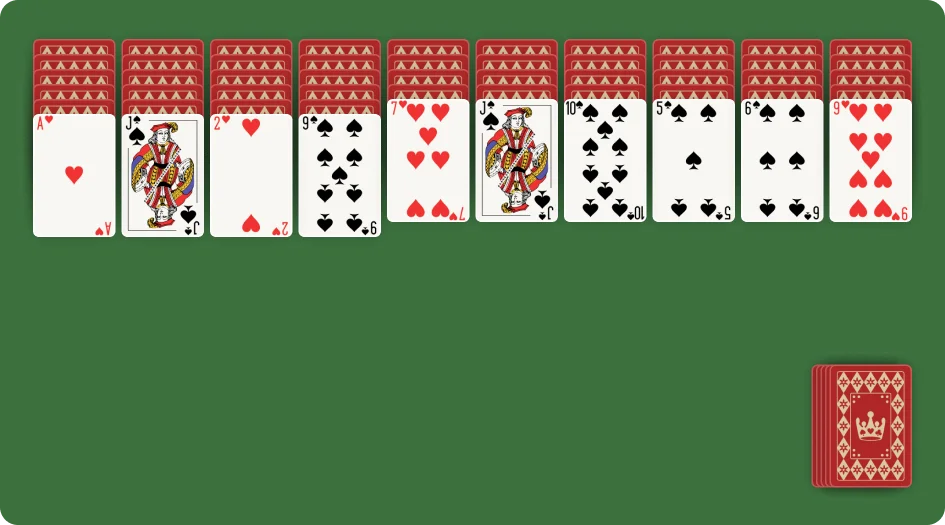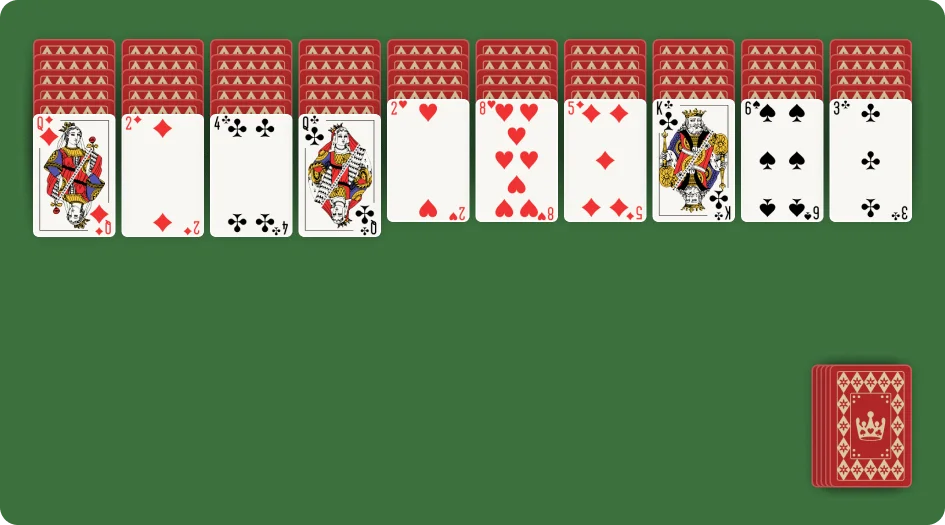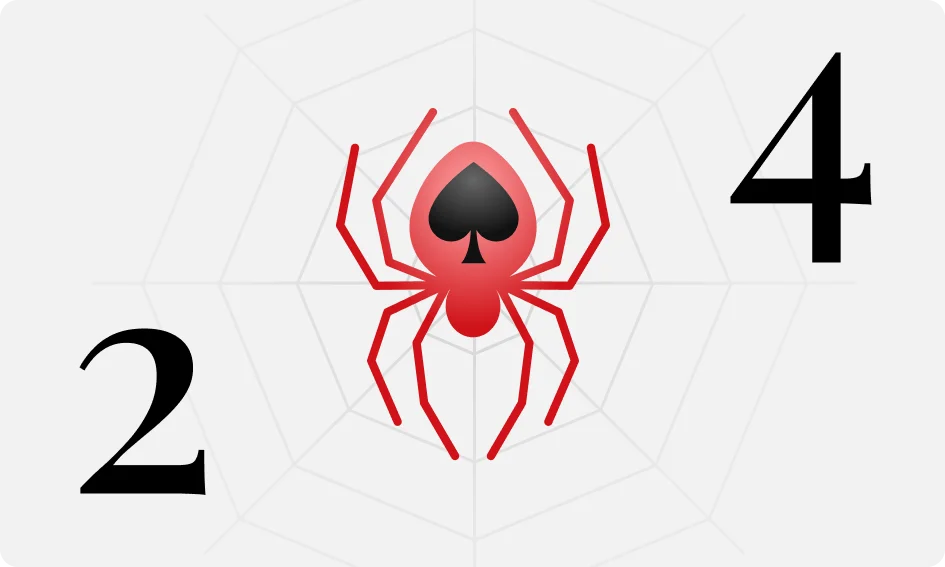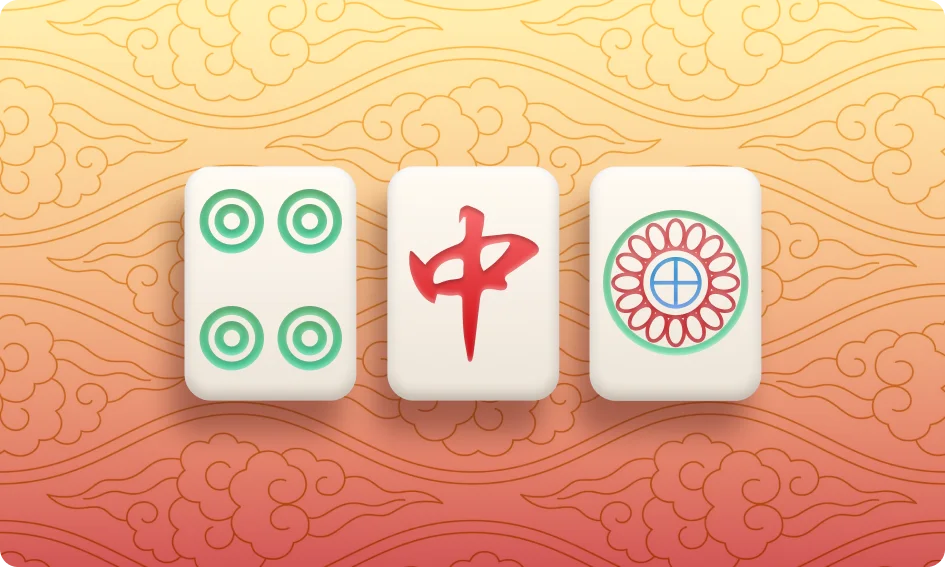Most people consider Spider Solitaire to be the toughest Solitaire variant out there. I’ve spent countless hours trying to beat different variations of the game, often to no avail. It’s frustrating to know that sometimes the deck simply isn’t shuffled in your favor, making the game unsolvable. Multi-suit variants add another layer of complexity and therefore difficulty.
Regular Spider Solitaire might be rather simple, but once you start introducing more suits, you’re entering different territory. There are two stages of difficulty when it comes to multi-suit variants: 2 Suits and 4 Suits Spider Solitaire. You might end up pulling your hair in frustration as you play these games (much like I often have). Nonetheless, I’m going to introduce – and hopefully help you navigate through – these challenging games. If you choose to attempt them, then you’ll have a head start.
Understanding Spider Solitaire

The first step to understanding the advanced Spider Solitaire variants is to grasp the fundamentals of the game. This means that I should take you through the basics before jumping up the ladder. Here’s a quick rundown. (If you’re a veteran, then you can probably skip this part).
Objective
The main goal in any Spider Solitaire game is to remove all the cards from the table by arranging them in a descending sequence of the same suit (from King to Ace).
Game Setup
Every game of Spider Solitaire uses two decks of 52 cards. These cards are arranged in three categories:
- The tableau: The tableau typically consists of 10 columns with six cards in each of the first four columns and five cards in each of the remaining six columns. This adds up to a total of 54 cards in the tableau. The first card in these columns must be face-up and the rest face-down. So, the number of cards in each column from left to right usually follows this pattern: 6, 6, 6, 6, 5, 5, 5, 5, 5, 5 – totaling 54 cards in the tableau.
- The stock pile: The remaining 50 cards are left in the stockpile, face down. You can draw from the stock pile whenever you like. But, as tempting as it might be to empty it out from the start, don’t do it. Rather wait until later when you really need this option.
- Cleared stacks: Completed sequences are removed from the tableau to clear up space. If you’re playing online, then you’ll usually find face-down sequences of cards at the bottom of your screen. These represent the cleared stacks. Once a sequence is completed, the cards will be sent to the bottom (eternally banished from the tableau).
Gameplay Mechanics
- You can move cards between columns if the card you are moving is one rank lower and the same suit as the one you are placing it on.
- You can also move incomplete sequences as a unit, as long as they’re the same suit.
- When a face-down card is exposed, you can flip it over and match it with others.
Creating Spaces
An empty column can be filled with any card or sequence of descending cards.
Dealing New Cards
When no more moves are possible, you can draw from the stock pile to deal a new row of cards across the columns.
Ending the Game
You win the game when all cards are removed in suit-specific descending sequences. If no more moves are possible and no cards can be dealt, then you lose the game. Don’t beat yourself up over a loss though. Some games are simply unsolvable.
2 Suits vs 4 Suits: The Differences

Before you tackle 4 suits Spider Solitaire, it’s a good idea to consider the differences between the two multi-suit variants. I was pretty antsy to take on the challenge of 4 Suit Spider Solitaire. But, there’s a reason why the game lets you slowly work up difficulty levels. Here’s a brief overview of what you’re getting yourself into with both games:
| Aspect | 2 Suits Spider Solitaire | 4 Suits Spider Solitaire |
| Number of suits | Two (Hearts and Spades) | Four (all suits) |
| Difficulty level | Intermediate | Advanced |
| Strategy complexity | Simple | Intricate |
| Game duration | Short | Long |
| Win probability | High | Low |
| Suit management | Easy | Demanding |
| Suitable for… | Intermediate players | Advanced players |
As you can see, 4 Suit Spider Solitaire is more difficult across the board. Speaking from experience, only the most advanced, experienced players tend to challenge themselves with this variant. It just takes too much cognitive effort (not to mention patience and endurance) for most casual players.






